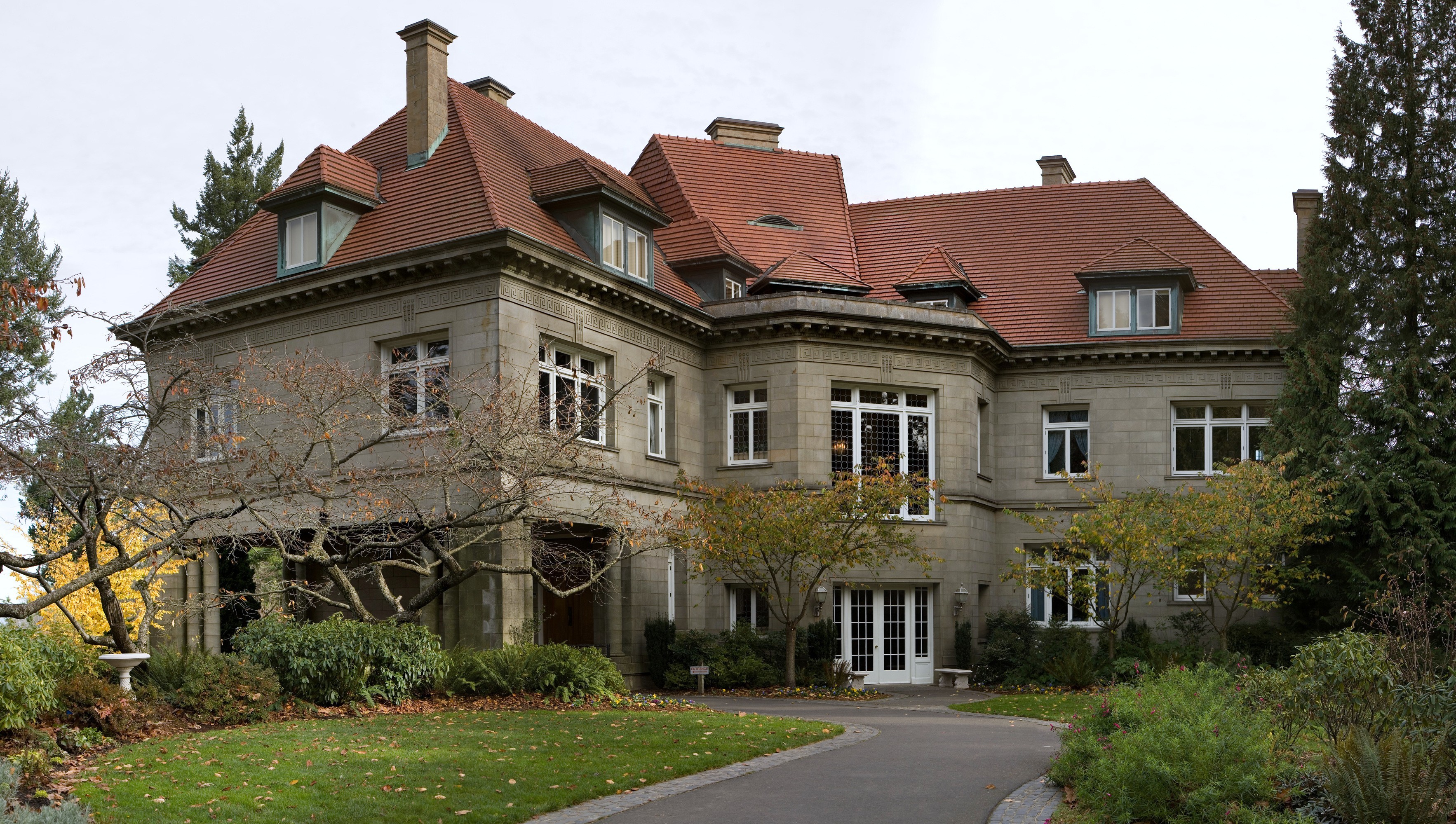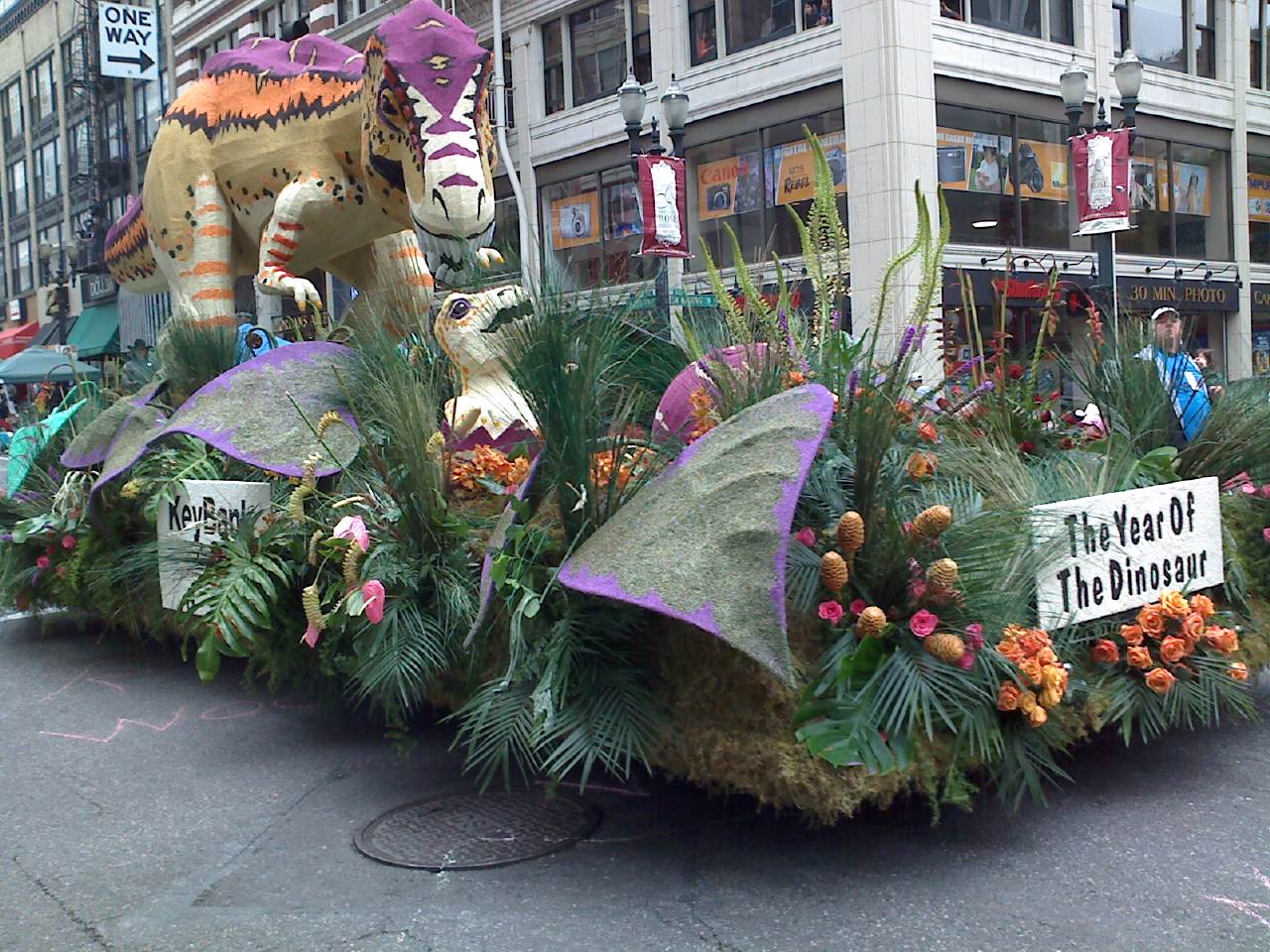|
Pittock Mansion
The Pittock Mansion is a French Renaissance-style château in the West Hills of Portland, Oregon, United States. The mansion was originally built in 1914 as a private home for London-born '' Oregonian'' publisher Henry Pittock and his wife, Georgiana Burton Pittock. It is a 46-room estate built of Tenino Sandstone situated on that is now owned by the city's Bureau of Parks and Recreation and open for touring. Modeled after Victorian and French Renaissance architecture, the mansion is situated on an expanse in the West Hills that provides panoramic views of Downtown Portland. The building was added to the National Register of Historic Places in 1974. History Construction and architecture Pittock Mansion was constructed in 1909 by London-born publisher and business tycoon Henry Pittock as a private residence for himself and his wife, Georgiana. The house was designed by San Francisco architect Edward T. Foulkes. Construction began in 1909, though the house was not completed ... [...More Info...] [...Related Items...] OR: [Wikipedia] [Google] [Baidu] |
Italianate Architecture
The Italianate style was a distinct 19th-century phase in the history of Classical architecture. Like Palladianism and Neoclassicism, the Italianate style drew its inspiration from the models and architectural vocabulary of 16th-century Italian Renaissance architecture, synthesising these with picturesque aesthetics. The style of architecture that was thus created, though also characterised as "Neo-Renaissance", was essentially of its own time. "The backward look transforms its object," Siegfried Giedion wrote of historicist architectural styles; "every spectator at every period—at every moment, indeed—inevitably transforms the past according to his own nature." The Italianate style was first developed in Britain in about 1802 by John Nash, with the construction of Cronkhill in Shropshire. This small country house is generally accepted to be the first Italianate villa in England, from which is derived the Italianate architecture of the late Regency and early Victorian eras. ... [...More Info...] [...Related Items...] OR: [Wikipedia] [Google] [Baidu] |
Downtown Portland
Downtown Portland is the city center of Portland, Oregon, United States. It is on the west bank of the Willamette River in the northeastern corner of the southwest section of the city and where most of the city's high-rise buildings are found. The downtown neighborhood extends west from the Willamette to Interstate 405 and south from Burnside Street to just south of the Portland State University campus (also bounded by I-405), except for a part of northeastern portion north of SW Harvey Milk Street and east of SW 3rd Ave that belongs to the Old Town Chinatown neighborhood. High-density business and residential districts near downtown include the Lloyd District, across the river from the northern part of downtown, and the South Waterfront area, just south of downtown in the South Portland neighborhood. Portland's downtown features narrow streets— wide—and square, compact blocks on a side, to create more corner lots that were expected to be more valuable. The sma ... [...More Info...] [...Related Items...] OR: [Wikipedia] [Google] [Baidu] |
Columbus Day Storm
The Columbus Day Storm of 1962 (also known as the Big Blow, and originally, and in Canada as Typhoon Freda) was a Pacific Northwest windstorm that struck the West Coast of Canada and the Pacific Northwest coast of the United States on October 12, 1962. Typhoon Freda was the twenty-eighth tropical depression, the twenty-third tropical storm, and the eighteenth typhoon of the 1962 Pacific typhoon season. Freda originated from a tropical disturbance over the Northwest Pacific on September 28. On October 3, the system strengthened into a tropical storm and was given the name ''Freda'', before becoming a typhoon later that day, while moving northeastward. The storm quickly intensified, reaching its peak as a Category 3-equivalent typhoon on October 5, with maximum 1-minute sustained winds of and a minimum central pressure of . Freda maintained its intensity for another day, before beginning to gradually weaken, later on October 6. On October 9, Freda weakened into a tropical storm, be ... [...More Info...] [...Related Items...] OR: [Wikipedia] [Google] [Baidu] |
Will H
Will may refer to: Common meanings * Will and testament, instructions for the disposition of one's property after death * Will (philosophy), or willpower * Will (sociology) * Will, volition (psychology) * Will, a modal verb - see Shall and will People and fictional characters * Will (comics) (1927–2000), a comic strip artist * Will (given name), a list of people and fictional characters named Will or Wil * Will (surname) * Will (Brazilian footballer) (born 1973) Arts, entertainment, and media Films * '' Will: G. Gordon Liddy'', a 1982 TV film * ''Will'' (1981 film), an American drama * ''Will'' (2011 film), a British sports drama * ''Bandslam'', a 2008 film with the working title ''Will'' Literature * ''Will'' (novel), by Christopher Rush * ''Will'', an autobiography by G. Gordon Liddy Music * Will (band), a Canadian electronic music act * ''Will'' (Julianna Barwick album), a 2016 album by Julianna Barwick * ''Will'' (Leo O'Kelly album), a 2011 album by Leo O'Kelly *''W ... [...More Info...] [...Related Items...] OR: [Wikipedia] [Google] [Baidu] |
Oregon State University Press
Oregon State University Press, or OSU Press, founded in 1961, is a university press that publishes roughly 15 titles per year and is part of Oregon State University. The only academic publisher in Oregon, the press produces works related to the Pacific Northwest, particularly the history, natural history, cultures, and literature of the region or environmental history and natural resource issues. Since June 1, 2005 OSU Press has distributed the books published by University of Oregon Press. References External linksOregon State University Press Press Press may refer to: Media * Print media or news media, commonly called "the press" * Printing press, commonly called "the press" * Press (newspaper), a list of newspapers * Press TV, an Iranian television network People * Press (surname), a fam ... University presses of the United States University and college mass media in Oregon Publishing companies established in 1961 Book publishing companies based in Oregon 1961 ... [...More Info...] [...Related Items...] OR: [Wikipedia] [Google] [Baidu] |
Portland Rose Festival
The Portland Rose Festival is an annual civic festival held during the month of June in Portland, Oregon. It is organized by the volunteer non-profit Portland Rose Festival Association with the purpose of promoting the Portland region. It includes three separate parades, along with a number of other activities. History The Portland Rose Society, founded by Georgiana Pittock and friends in 1888, began with a backyard rose show in Pittock's garden. The annual fundraising event drew more crowds each year. By 1904, the rose society was hosting its annual rose show along with additional festivities, including a parade and pageant. In 1905, Portland Mayor Harry Lane is remembered for his rousing speech at the Lewis and Clark Exposition, telling the large crowd that Portland needed a "festival of roses". In 1906, the first Rose Festival and Flower Parade was held in Portland. Pittock and neighbors contributed roses from their gardens to decorate floats, wagons, people and horses for ... [...More Info...] [...Related Items...] OR: [Wikipedia] [Google] [Baidu] |
French Renaissance Architecture
French Renaissance architecture is a style which was prominent between the late 15th and early 17th centuries in the Kingdom of France. It succeeded French Gothic architecture. The style was originally imported from Italy after the Hundred Years' War by the French kings Charles VII, Louis XI, Charles VIII, Louis XII and François I. Several notable royal châteaux in this style were built in the Loire Valley, notably the Château de Montsoreau, the Château de Langeais, the Château d'Amboise, the Château de Blois, the Château de Gaillon and the Château de Chambord, as well as, closer to Paris, the Château de Fontainebleau. This style of French architecture had two distinct periods. During the first period, between about 1491 and 1540, the Italian style was copied directly, often by Italian architects and craftsmen. In the second period, between 1540 and the end of the Valois dynasty in 1589, French architects and craftsmen gave the style a more distinctive and original F ... [...More Info...] [...Related Items...] OR: [Wikipedia] [Google] [Baidu] |
Architecture Of Turkey
Architecture of Turkey or Turkish architecture in the Republican Period refers to the architecture practised in the territory of present-day Turkey since the foundation of the republic in 1923. In the first years of the republic, Turkish architecture was influenced by Seljuk and Ottoman architecture, in particular during the ''First National Architectural Movement'' (also called the ''Turkish Neoclassical'' architecture movement.) However, starting from the 1930s, architectural styles began to differ from traditional architecture, also as a result of an increasing number of foreign architects being invited to work in the country, mostly from Germany and Austria. The Second World War was a period of isolation, during which the ''Second National Architectural Movement'' emerged. Similar to Fascist architecture, the movement aimed to create a modern but nationalistic architecture. Starting from the 1950s, isolation from the rest of the world began to diminish, which enabled the Turk ... [...More Info...] [...Related Items...] OR: [Wikipedia] [Google] [Baidu] |
Edwardian Architecture
Edwardian architecture is a Neo-Baroque architectural style that was popular in the British Empire during the Edwardian era (1901–1910). Architecture up to the year 1914 may also be included in this style. Description Edwardian architecture is generally less ornate than high or late Victorian architecture, apart from a subset – used for major buildings – known as Edwardian Baroque architecture. The Victorian Society campaigns to preserve architecture built between 1837 and 1914, and so includes Edwardian as well as Victorian architecture within its remit. Characteristics The characteristic features of the Edwardian Baroque style were drawn from two main sources: the architecture of France during the 18th century and that of Sir Christopher Wren in England during the 17th—part of the English Baroque (for this reason Edwardian Baroque is sometimes referred to as "Wrenaissance"). Sir Edwin Lutyens was a major exponent, designing many commercial buildings in what he ter ... [...More Info...] [...Related Items...] OR: [Wikipedia] [Google] [Baidu] |
Jacobean Architecture
The Jacobean style is the second phase of Renaissance architecture in England, following the Elizabethan style. It is named after King James VI and I, with whose reign (1603–1625 in England) it is associated. At the start of James' reign there was little stylistic break in architecture, as Elizabethan trends continued their development. However, his death in 1625 came as a decisive change towards more classical architecture, with Italian influence, was in progress, led by Inigo Jones; the style this began is sometimes called Stuart architecture, or English Baroque (though the latter term may be regarded as starting later). Courtiers continued to build large prodigy houses, even though James spent less time on summer progresses round his realm than Elizabeth had. The influence of Flemish and German Northern Mannerism increased, now often executed by immigrant craftsmen and artists, rather than obtained from books as in the previous reign. There continued to be very little build ... [...More Info...] [...Related Items...] OR: [Wikipedia] [Google] [Baidu] |
Central Vacuum
A central vacuum cleaner (also known as built-in or ducted) is a type of vacuum cleaner appliance, installed into a building as a semi-permanent fixture. Central vacuum systems are designed to remove dirt and debris from homes and buildings, sending dirt particles through piping installed inside the walls to a collection container in a remote utility space. The power unit is a permanent fixture, usually installed in a basement, garage, or storage room, along with the collection container. Inlets are installed in walls throughout the building that attach to power hoses and other central vacuum accessories to remove dust, particles, and small debris from interior rooms. Most power hoses usually have a power switch located on the handle. History 19th century The first introduction of a system similar to a central vacuum cleaner was in the late 19th century. A ducted machine that featured copper tubes connected from a bellows chamber, typically located in the basement, and extende ... [...More Info...] [...Related Items...] OR: [Wikipedia] [Google] [Baidu] |
Tycoon
A business magnate, also known as a tycoon, is a person who has achieved immense wealth through the ownership of multiple lines of enterprise. The term characteristically refers to a powerful entrepreneur or investor who controls, through personal enterprise ownership or a dominant shareholding position, a firm or industry whose goods or services are widely consumed. Such individuals have been known by different terms throughout history, such as industrialists, robber barons, captains of industry, czars, moguls, oligarchs, plutocrats, or taipans. Etymology The term ''magnate'' derives from the Latin word ''magnates'' (plural of ''magnas''), meaning "great man" or "great nobleman". The term ''mogul'' is an English corruption of ''mughal'', Persian or Arabic for "Mongol". It alludes to emperors of the Mughal Empire in Medieval India, who possessed great power and storied riches capable of producing wonders of opulence such as the Taj Mahal. The term ''tycoon'' derives from ... [...More Info...] [...Related Items...] OR: [Wikipedia] [Google] [Baidu] |








.jpg)